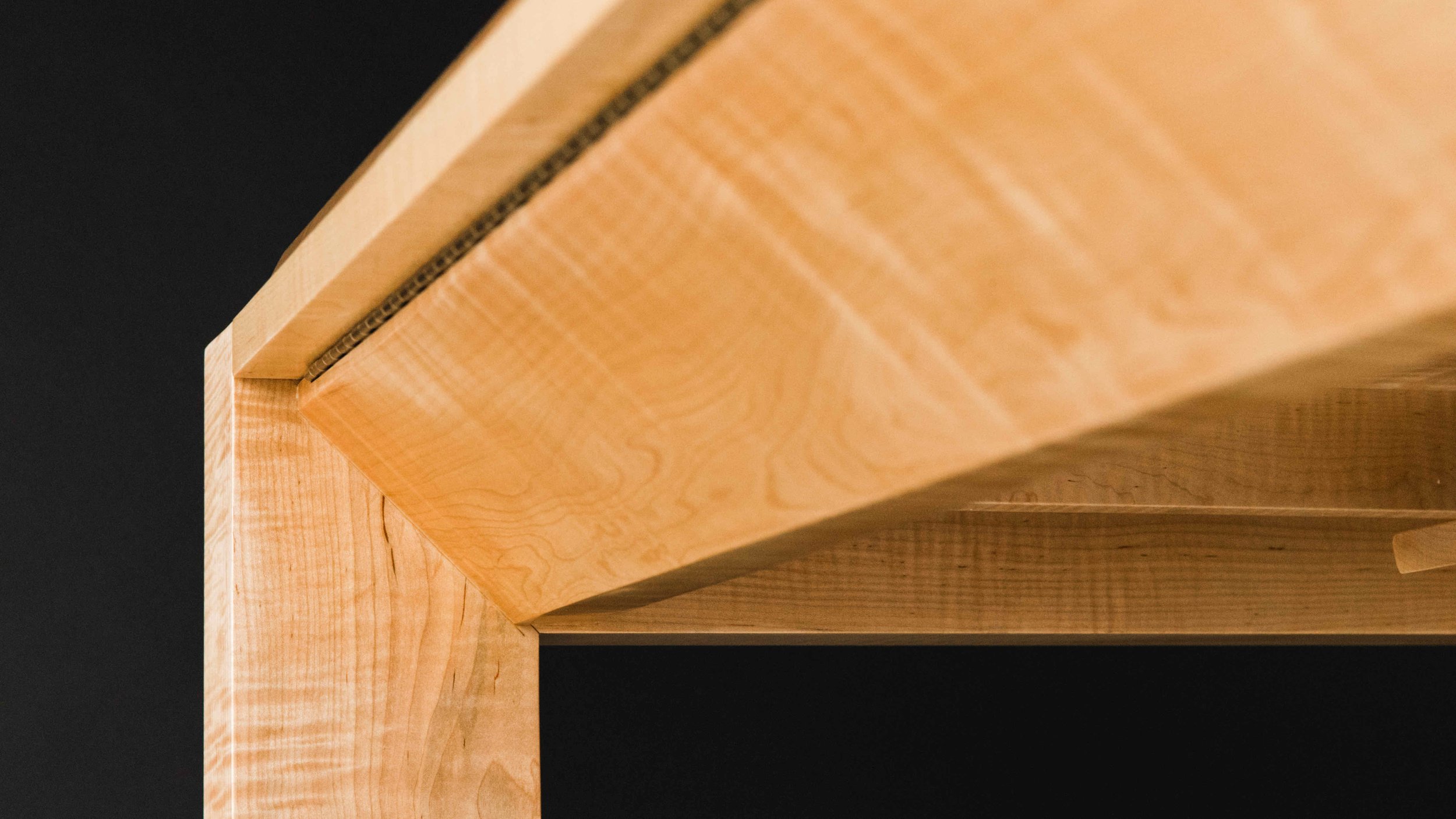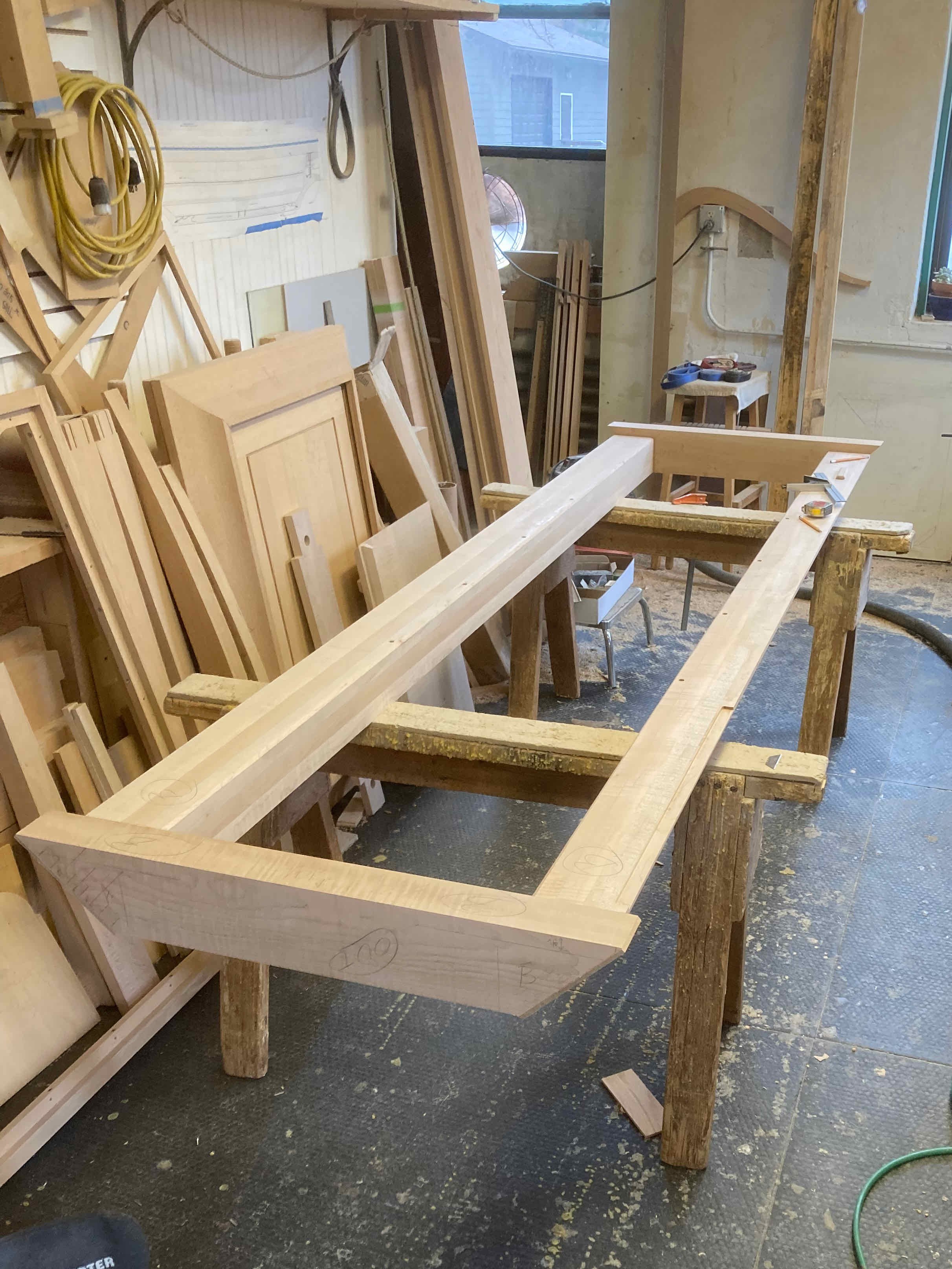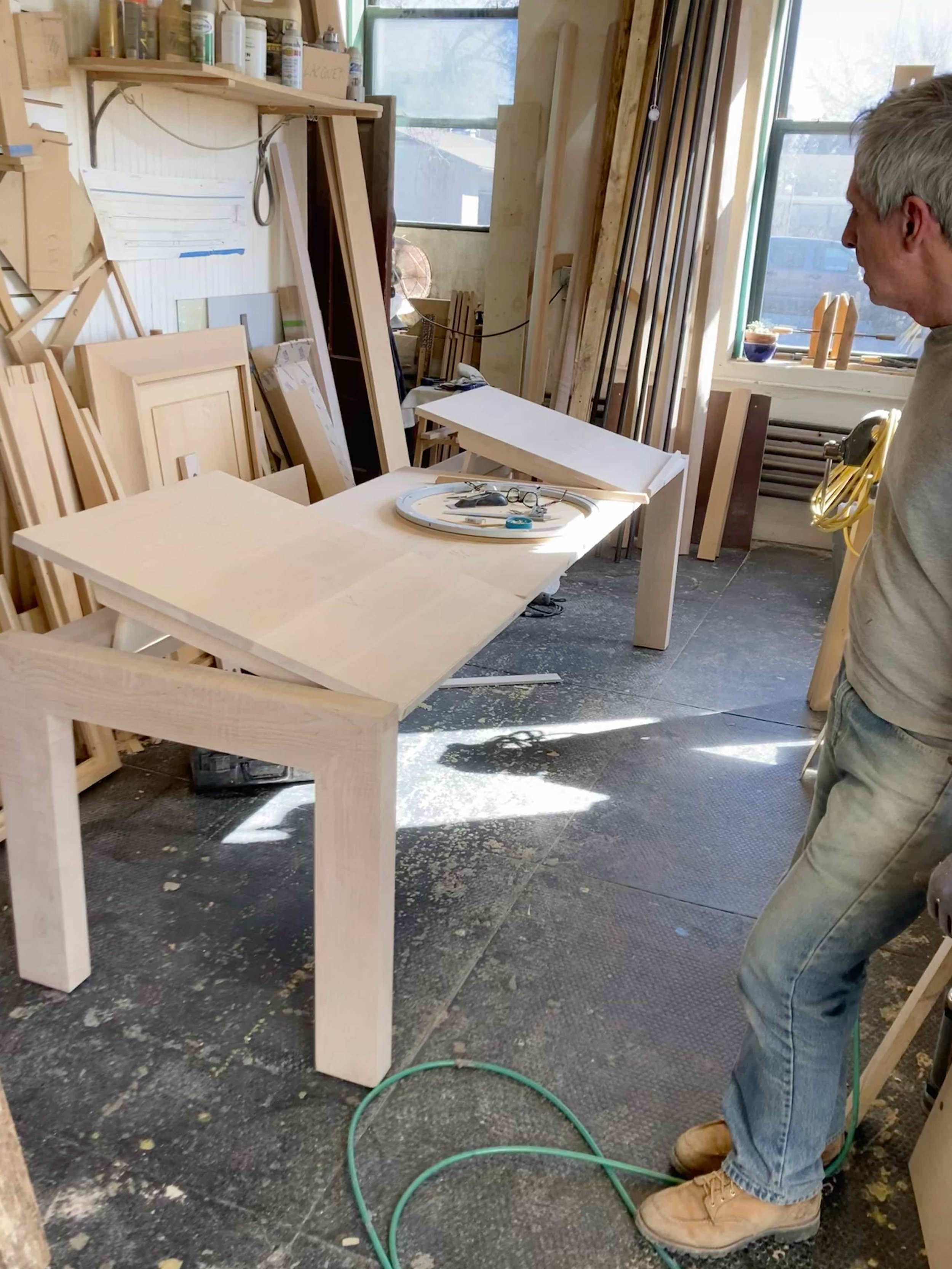Something Old, Something New
Computers have revolutionized our ability to view multiple documents at one time. We take for granted the ease with which we can move between texts or programs with the simple click of a mouse. Long before computers, at the turn of the 18th century, Thomas Jefferson took it upon himself to create a device that would allow him to do a similar task without computer assistance. Inspired by bookstands he saw in Paris, Jefferson developed what we know as the Thomas Jefferson Bookstand, a cube-shaped stand with five adjustable rests for holding manuscripts or books. The cube rests on a pole that allows the bookstand to spin, thus making it possible to compare up to five volumes at the same time. Such a stand is on display in the Cabinet Room at Monticello.
With Jefferson’s bookstand in mind, a client approached Abbey Woodworking to propose creating a modern table and bookstand that would allow up to seven manuscripts to be viewed at once. After constructing several prototypes, we came up with the “Curtis Table,” named after the bound collection of Edward S. Curtis prints for which this table was specifically designed. From the pictures in this post, you will see how we adapted Jefferson’s classic design to create something new.
In addition to observing the design of the piece, notice that the table and bookstand are crafted out of solid curly maple. “Curly” does not refer to a new type of maple tree but the figure in the wood. Look closely and you’ll see that the wavy or rippled grain of this wood makes it appear holographic. The wavy (rather than straight) grain of this wood creates “chatoyancy,” the optical effect that gives the wood an illusion of three dimensions when exposed to light. The effect, also seen in gemstones, is what makes curly maple so highly sought-after. It is often used as a veneer in high-end applications or in the construction of musical instruments.
There are many theories to explain how wood becomes “curly” or “figured.” Some believe that climate, soil, geography, tension or the rate of growth causes this waving growth in trees. However, all of these reasons are little more than conjectures; no one knows for sure what causes this phenomenon.
There are other types of figured wood such as quilt, crotch, spalt, ray fleck or flame, but the figure that is most prominent in the Curtis Table is classified as the “Fiddleback” curl. This type of curl has a tight, uniform grain that stands close to a 90-degree angle to the primary wood grain. While beautiful in appearance, figured lumber like curly maple can be especially difficult to work with because it is liable to tear out. Sharp tools and light, careful cuts can avoid most problems.
When in use, this table and bookstand are meant to highlight the manuscripts and prints that are on display. Folded down and standing alone in a room without books, the table itself remains an object of art, worthy of study in the elegant script of natural grain.




















